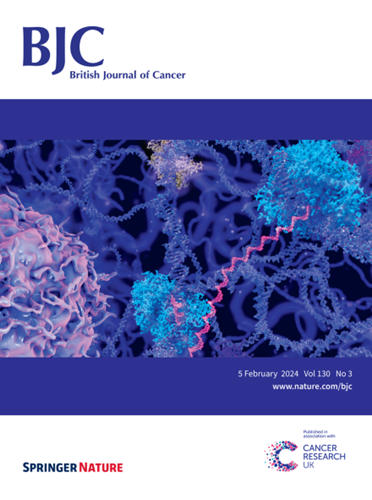Benzaldehyde suppresses epithelial-mesenchymal plasticity and overcomes treatment resistance in cancer by targeting the interaction of 14-3-3ζ with H3S28ph
IF 6.8
1区 医学
Q1 ONCOLOGY
引用次数: 0
Abstract
Benzaldehyde (BA) is an aromatic aldehyde found in fruits that has been studied as a potential anticancer agent on the basis of its ability to inhibit transformation in mouse embryo cells and to suppress metastasis in mice. We investigated the cytotoxic effects of BA on cancer cells, and probed its effects on intracellular signaling pathways. The anticancer effects of BA in vivo were studied by using a mouse orthotopic transplantation model of pancreatic cancer. BA inhibited the growth of osimertinib- or radiation-resistant cancer cells as well as the interaction between 14-3-3ζ and its client proteins. The interaction of 14-3-3ζ with the Ser28-phosphorylated form of histone H3 (H3S28ph) was implicated in treatment resistance and the transcriptional regulation of genes related to epithelial-mesenchymal transition and stemness, including E2F2, SRSF1, and ID1. Treatment of mice with a BA derivative inhibited pancreatic tumor growth and lung metastasis, as well as suppressed a state of epithelial-mesenchymal plasticity (EMP) of tumor cells. The interaction between 14-3-3ζ and H3S28ph plays a key role in EMP and treatment resistance in cancer. The ability of BA to inhibit this and other interactions of 14-3-3ζ offers the potential to overcome treatment resistance and to suppress metastasis.

苯甲醛通过靶向14-3-3ζ与H3S28ph的相互作用,抑制上皮-间质可塑性并克服癌症的治疗耐药性。
背景:苯甲醛(BA)是一种在水果中发现的芳香醛,由于其抑制小鼠胚胎细胞转化和抑制小鼠转移的能力而被研究为潜在的抗癌剂。方法:研究BA对癌细胞的细胞毒作用,并探讨其对细胞内信号通路的影响。采用小鼠胰腺癌原位移植模型,研究了BA在体内的抗癌作用。结果:BA抑制奥西替尼或辐射耐药癌细胞的生长,并抑制14-3-3ζ与其客户蛋白的相互作用。14-3-3ζ与ser28磷酸化形式的组蛋白H3 (H3S28ph)的相互作用涉及治疗抗性和与上皮-间质转化和干性相关的基因的转录调控,包括E2F2, SRSF1和ID1。用BA衍生物治疗小鼠可抑制胰腺肿瘤生长和肺转移,并抑制肿瘤细胞的上皮间质可塑性(EMP)状态。结论:14-3-3ζ与H3S28ph的相互作用在肿瘤EMP和耐药过程中起关键作用。BA抑制14-3-3ζ的这种和其他相互作用的能力提供了克服治疗耐药性和抑制转移的潜力。
本文章由计算机程序翻译,如有差异,请以英文原文为准。
求助全文
约1分钟内获得全文
求助全文
来源期刊

British Journal of Cancer
医学-肿瘤学
CiteScore
15.10
自引率
1.10%
发文量
383
审稿时长
6 months
期刊介绍:
The British Journal of Cancer is one of the most-cited general cancer journals, publishing significant advances in translational and clinical cancer research.It also publishes high-quality reviews and thought-provoking comment on all aspects of cancer prevention,diagnosis and treatment.
 求助内容:
求助内容: 应助结果提醒方式:
应助结果提醒方式:


